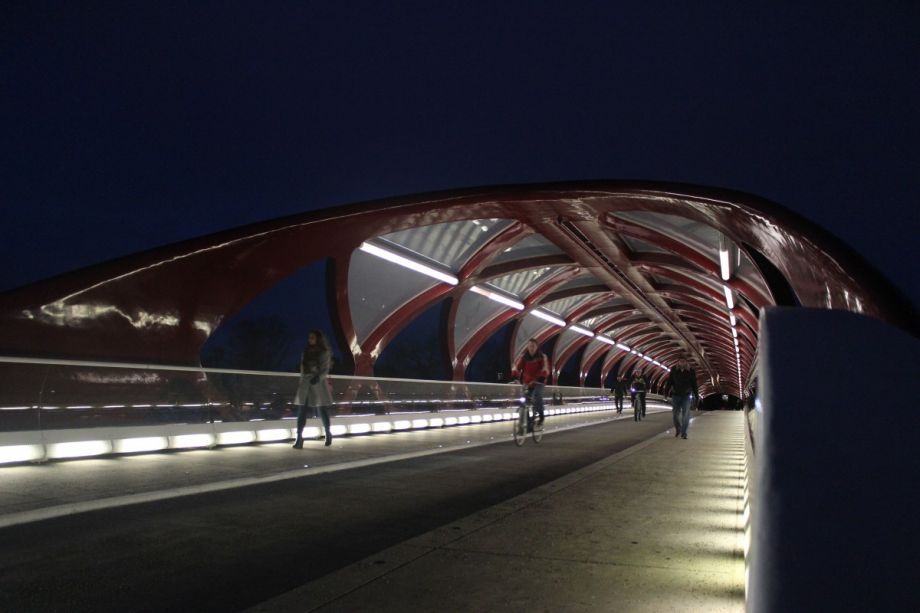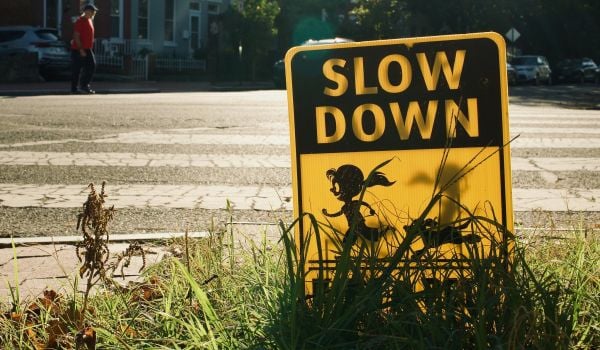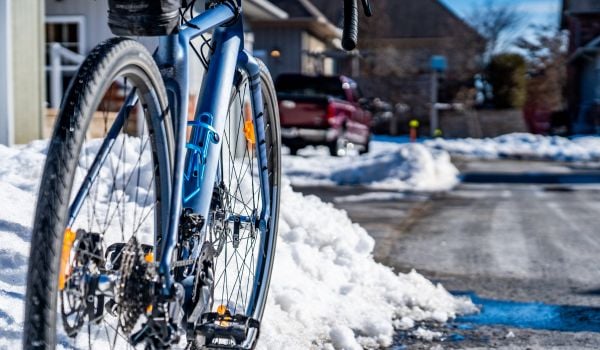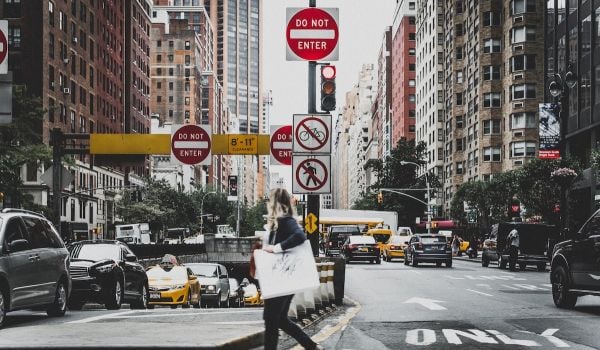As Congress and President Obama engage in a showdown over the Keystone XL Pipeline, one North American city is paying close attention. Calgary is home to the corporate headquarters for Alberta’s thriving oil and gas industry. Its petroleum-driven economy has earned the province’s largest city the nickname “the Houston of Canada,” but the streets of this city of one million feel far more welcoming to pedestrians and cyclists thanks to a proactive city government.
In 2014 alone, city council passed a Complete Streets Policy and approved a 3.4-mile cycle track network that will break ground in March. Now, building on a cycling strategy adopted in 2011, the transportation department will spend this year preparing a pedestrian strategy. It will focus on infrastructure like better lighting for underpasses, new overpasses near transit stations, and improved snow and ice removal.
“If 2014 was the year of cycling, then we’re focusing on a pedestrian strategy in 2015 because we recognize it as the most sustainable form of transportation,” says Joe Olson, manager of the Livable Streets Division.
Calgary’s shift toward bike and pedestrian friendliness did not come out of the blue.
“We have policy in place that prioritizes our mobility,” says city councilor Druh Farrell. “Pedestrians, cyclists and transit are the top priorities. It’s been that way for a long time but it hasn’t been reflected in our operations and how we budget.” She cites the Santiago Calatrava-designed Peace Bridge, which opened in 2012 exclusive to pedestrians and cyclists, as a turning point in the city’s attitude.
At the same time, expenditures on such infrastructure have generated a lot of pushback in a historically less progressive metro area with its fair share of suburban cul-de-sacs. Even though conservative Prime Minister Stephen Harper’s riding (equivalent to a congressional district) is in Calgary, the political winds are changing according to city councilor Evan Woolley.
“Calgary’s political culture is fiscally but not socially conservative,” he says. “You think of that honky-tonk truck driver. But we shed that skin when we elected a Muslim mayor in 2010.”
If a city’s tone starts from the top, then Mayor Naheed Nenshi has made it clear what civic leaders want Calgary not to be. “The mayor said that he doesn’t want the city to build out in an uncontiguous, really bad way,” Woolley recalls. “So we asked, ‘what city is that?’ He said Houston and Denver.”
In fact, despite the obvious oil comparison, Calgary looks more like the Colorado capital, a fellow cattle and railroad hub at the foot of the Rocky Mountains. And while Nenshi’s criticism may be unfounded in light of metro Denver’s recent accolades, the trends are in place to support a more vibrant, accessible Calgary. “The city is growing more up and less out,” Woolley says. “So that’s a major driver.” He points to a rising downtown population and a decreasing number of driver’s license applications, aided by a walkable, gridded core and plentiful car-sharing.
Farrell is convinced these trends have filtered up to city government. “The level of awareness from Calgarians is what’s driving council and it’s often a generational shift,” she says. The major university presence helps, but she concedes that Calgary is a big place and in outer neighborhoods where a car culture still dominates, “they find expenditures on cyclists and pedestrians to be frivolous.”
The different priorities echo in city council chambers. “On the same day, council may debate a $1 billion transportation budget for roads with very little scrutiny for just a few minutes of debate. Contrast that with hours of debate around a cycling project,” Farrell says, alluding to the $10 million or so spent on the pilot cycle track network.
These car vs. bike wars, common to cities across North America, have nevertheless played out in favor of the brave souls who take to city streets on two wheels, oftentimes feeling they have no alternative.
“When I started biking in Calgary, it was out of frustration with transit,” confesses Dan Godin, a Bike Calgary board member. Calgary Transit operates two light-rail lines, which, while the third busiest in North America by weekday passenger trips, still does not cover the whole city.
Cyclists in the city are in positions of power. “Since I got on council, I have been pushing hard for us to begin to build the required infrastructure, and all the supports required, to make cycling a viable transportation choice in our city,” explains councilor Brian Pincott. “The main reason is that before I got on council, I was a 365 days a year cycling commuter. I saw the gaps, experienced them firsthand, and knew that we had to do more.”
One challenge cycling and walking Calgarians know all too well: winter. Regular freeze/thaw cycles make bike lanes, sidewalks and paths dangerous, and are a particular municipal maintenance challenge. The roads department has a $35 million budget for snow and ice removal, and has been directed to clear priority cycling routes for the first time, according to Olson.
Until this point, winter riders have veered toward the dedicated. “Winter bike culture in Calgary right now is mostly made up of bold and brave men,” says Tom Babin, the Calgary-based author of Frostbike: The Joy, Pain and Numbness of Winter Cycling.
That, however, is changing, with a downtown bridge bike counter showing an impressive 25 percent of summer numbers during the bitter cold months. Babin says, “This winter, I’m seeing a lot more people riding in their regular work clothes, rather than that hardcore winter bike gear, which I think is a reflection of the improvements the city has made in inner-city bicycle infrastructure.”
The Works is made possible with the support of the Surdna Foundation.

Gregory Scruggs is a Seattle-based independent journalist who writes about solutions for cities. He has covered major international forums on urbanization, climate change, and sustainable development where he has interviewed dozens of mayors and high-ranking officials in order to tell powerful stories about humanity’s urban future. He has reported at street level from more than two dozen countries on solutions to hot-button issues facing cities, from housing to transportation to civic engagement to social equity. In 2017, he won a United Nations Correspondents Association award for his coverage of global urbanization and the UN’s Habitat III summit on the future of cities. He is a member of the American Institute of Certified Planners.

















